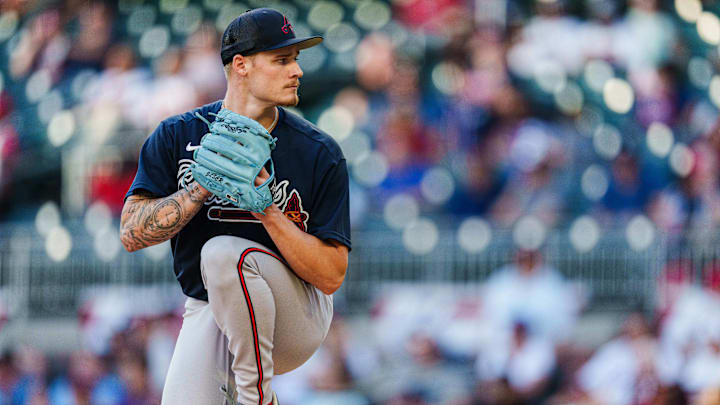1. AJ Smith-Shawver RHP 21 BA:1 BP: 4 OFFR: 1. BA has AJSS at 53 on baseball’s top-100 player list.
We caught glimpses of the best AJSS when the Atlanta Braves rushed him up last year after Shuster and Dodd weren’t able to hold the job. It wasn't a surprising result as he was just 20 years old with only two games at AA and AA before coming to Atlanta.
AJSS has the best fastball in the system, a 65-grade heater with movement that sits at 95 and touches 99; BA suggests that better command will raise it to a 70-grade pitch. He pairs that with a 60-grade slider, a 55-grade Curve, and a 50-grade changeup.
BA and the OFFR call AJSS a FV 60 frontline starter, while Brickners drops him to a FV55 number three starter because he doesn’t like the shape of his pitches. Both are correct; it’s just that BA and the OFFR are more optimistic.
BA and the OFFR both suggest better command and location are required, and Brickner says better command and movement would immediately move him to the same FV 60.
That’s a Wrap
The Atlanta Braves system may be thin on position players, but they appear to have a lot of pitching – mostly right-handed – on the way.
Since the Rule 4 Amateur draft began in 1965, the Braves have drafted pitching and traded for everything else unless the position player was clearly superior’ a method that works until the pitchers you drafted don’t turn out as hoped.
The Braves farm system is thin, but their top pitching prospects are desirable trade pieces if the need arises. We’ll see at least a couple of these prospects in Atlanta in 2024. We may also see a couple of them moved this winter. If that thought is upsetting, remember, that’s the way we acquired Fried, Swanson, Sean Murphy, and Matt Olson.
